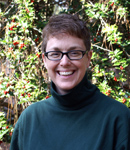| Ruins speak, albeit incoherently. I walk through
the decrepit alleyways of a Hakka compound and hear fragmented
whispers from two hundred years ago—we came from central
China, Hakka people value education, our ancestors once served
the Emperor. I also see remnants of more recent inhabitation—Mao
stencils, Spiderman posters, cooking pots and vegetable baskets.
I smell moldy walls and rotting wood, cautiously reach out and
touch a forgotten teapot. Dust.
But that is not it, not it at all.
Once photographed, any ruin speaks otherwise, murmuring something
uncannily Greek, or rather, classical, which has always been a
way of seeing and not a time or place:
| After a hundred years
Nobody knows the place,--
Agony, that enacted there,
Motionless as peace. ~Emily Dickenson |
 |
These photos were taken in Pingshan, Longgang District, Shenzhen
City, PR China. Some of the sites will be preserved, others will
be razed to make way for residential developments and shopping
malls. These images of a lingering past not only lament the passing
of an era, but also explain the urgency with which Pingshan has
pursued modernization. A friend
looks at these pictures and sighs. “Everywhere in China
has hundreds, maybe thousands of years of history,” he says.
“That’s the problem. If we save our past, how can
we live in the present?”
Located just north of Hong Kong, Shenzhen is better known as
the harbinger of China’s post-Mao reforms. Over the past
twenty-five years, a city of 10 million urbanites has replaced
a rural county of 300,000 farmers and fishermen; skyscrapers now
fill the horizon; and foreign investors rush across the border
to build soap factories next to traditional villages, which, I
should add, locals have understandably abandoned in favor of modern
amenities—running water, electricity, air-conditioning,
gas stoves, refrigerators, bigger rooms, and, of course, fragrant
soaps. ______________________________________________________________________
|
 An
anthropologist by training, I have lived and worked in Shenzhen
since 1995. My work explores how the local past is variously forgotten,
destroyed, and redeployed as people strive to define themselves
as Chinese and international, traditional and modern. This research
has been published in peer-reviewed journals and presented at
international conferences. My photography has been published in
Writing Macau (online), World Union Review (print), and Nanshan
Arts An
anthropologist by training, I have lived and worked in Shenzhen
since 1995. My work explores how the local past is variously forgotten,
destroyed, and redeployed as people strive to define themselves
as Chinese and international, traditional and modern. This research
has been published in peer-reviewed journals and presented at
international conferences. My photography has been published in
Writing Macau (online), World Union Review (print), and Nanshan
Arts
(print anthology).
|